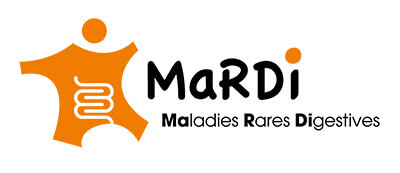Definition and clinical description
Crohn’s disease is an inflammatory disease that may affect any part of the digestive tract, from the mouth to the anus.
It was described for the first time in 1932 by an American physician: Burril B Crohn.
It is a chronic disease with different phases of activity (flare-ups) of varying intensity, alternating with periods of more or less complete and extended remission.
It is impossible to predict the frequency of these flare-ups. It is only over time that we can distinguish between patients whose flare-ups are spaced out and those with more frequent episodes.
The disease may simultaneously or successively affect one or more segments of the digestive tract. However, it is most often situated in the large intestine or colon (in such a case, it is known as colitis: the suffix -itis refers to inflammation), at the end of the short intestine or ileum (ileitis) or in both segments (ileocolitis).
Symptoms and prevalence
The nature of clinical manifestations of Crohn’s disease depends on its location in the different segments of the digestive tract (short intestine, colon, rectum, anus, etc.).
The main manifestations are intestinal:
- abdominal pain, significant diarrhoea with bloody mucus if the colon is affected;
- intermittent diarrhoea in ileal forms;
- symptoms in the anal region (fissures, ulcers, fistulas, abscesses) in 30-50% of cases;
- aphthous stomatitis (5-25%).
A change in general health often accompanies flare-ups: fatigue (asthenia), loss of appetite (anorexia) and weight loss in 50% of cases, and fever in case of inflammatory flare-up.
If weight loss is significant, it may be accompanied by growth problems and delayed puberty. Growth problems exist in 40-70% of cases, accompanied by a delay in bone maturation; delayed puberty occurs in 30-40% of cases, with disruption of the menstrual cycle during flare-ups.
In some cases, certain flare-ups are accompanied by extra-intestinal manifestations: joints (arthritis), skin (knotty erythema) or eyes (uveitis).
Crohn’s disease is usually revealed in young adults (ages 15 to 40); it is rare in children under 10. Its incidence is five per 100,000 residents per year. In children, 75% of cases are revealed between ages 10 and 16, 25% under age 10, and just 3% in infants.
The cause of Crohn's disease is still unknown; however, recent research has helped to better understand the mechanisms involved in this disease:
- Crohn’s disease is not “hereditary” in the standard meaning of the word, but there is a genetic factor in predisposition to the disease - the NOD2/CARD15 gene on chromosome 16 of the human genome. Other genes are likely involved in the disease, as certain studies in progress suggest;
- There are also anomalies of the intestinal immune system, explaining the extent and the long-term character of the intestinal inflammation, but it is not yet known what factor(s) trigger(s) this immune reaction;
- The role of diet has often been cited but never confirmed;
- Discussion remains open about the role of an infectious agent (viral or bacterial), but Crohn’s disease is not “contagious”. The bacterial flora residing in the intestine definitely plays a role;
- Lastly, it is not a “psychosomatic” disease, even though psychological factors may affect the evolution of Crohn’s disease, as is the case with many diseases;
- Among environmental factors, the harmful role of tobacco has been clearly established.
Care and treatment
Care for the disease is multi-disciplinary: gastroenterologists, psychologists, etc.
There is no curative treatment for Crohn’s disease. Treatment can attenuate the symptoms and reduce the frequency of flare-ups. These treatments include medications, surgery and a suitable diet.
Twice-yearly follow-up is required once a specific treatment has been prescribed, and an annual exam by a gastroenterologist is recommended.
Diagnostic method
Diagnosis is based on a set of clinical and paraclinical criteria. It is generally made during a flare-up. It is based on biological analyses and an endoscopic examination of the colon and ileum. Biological elements are sampled during the endoscopy for anatomopathological analysis.


